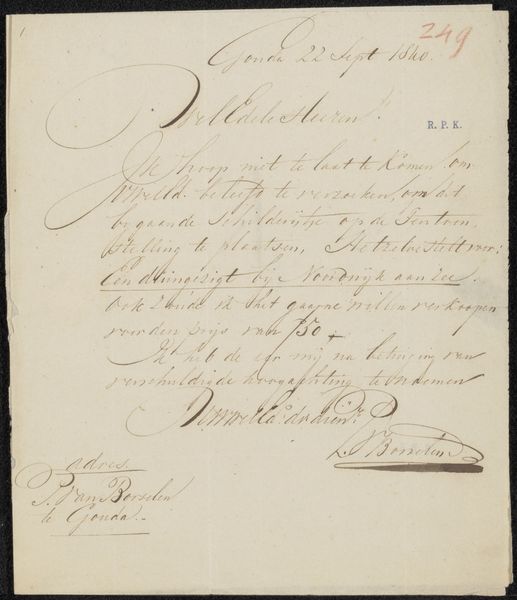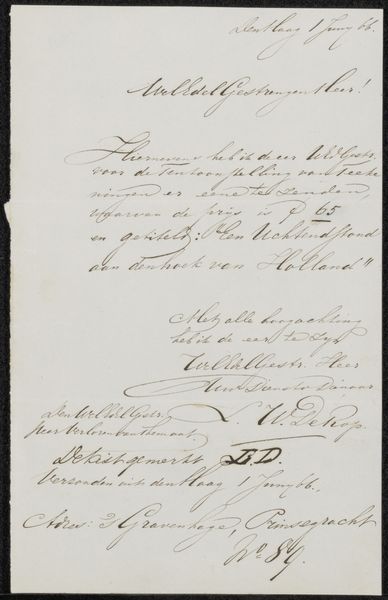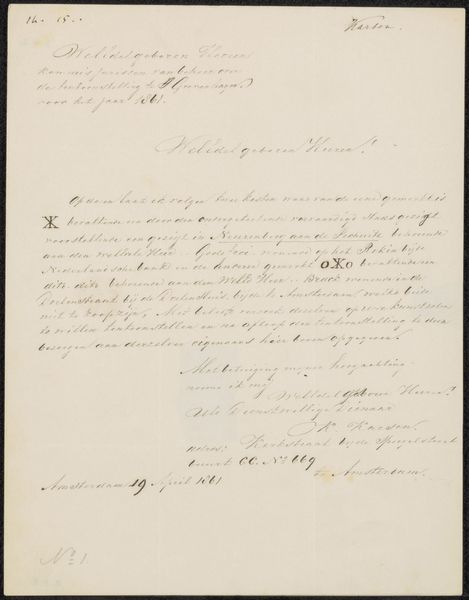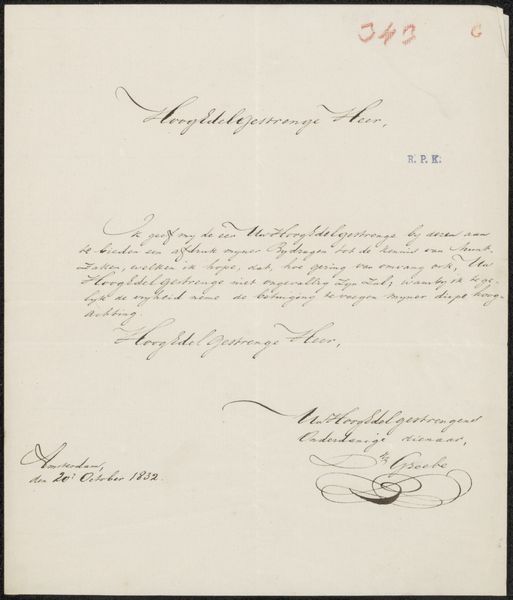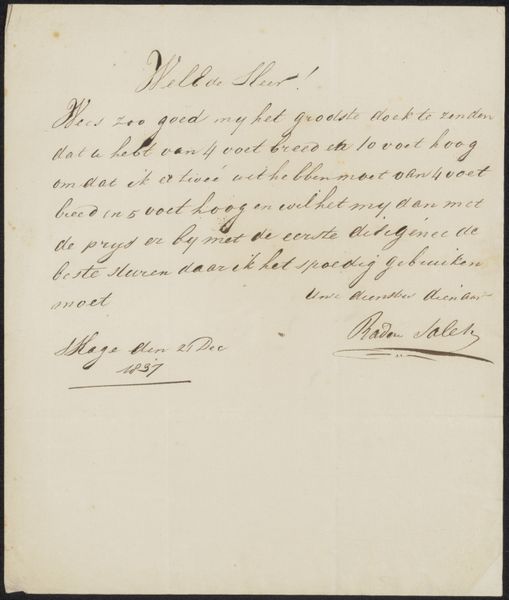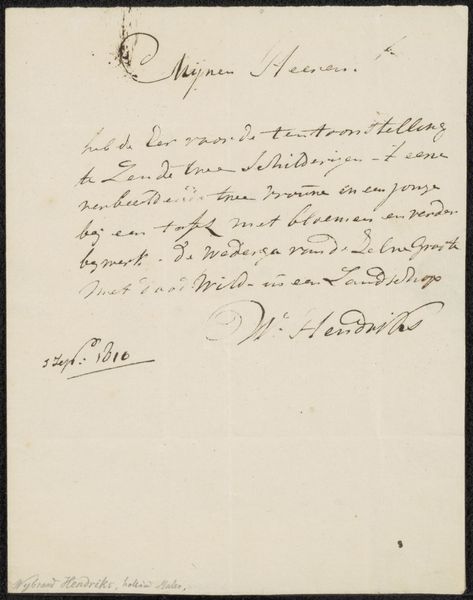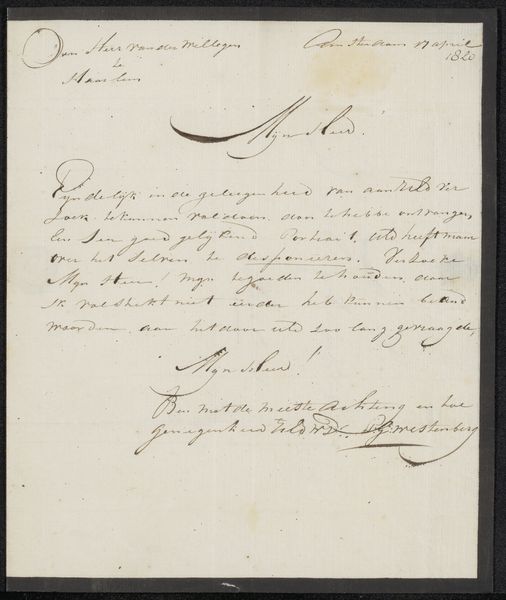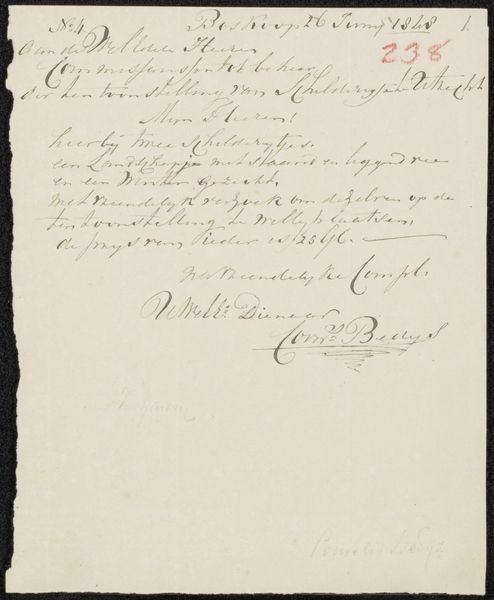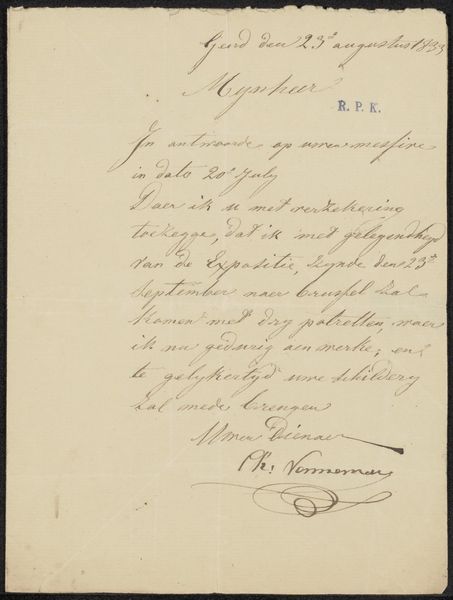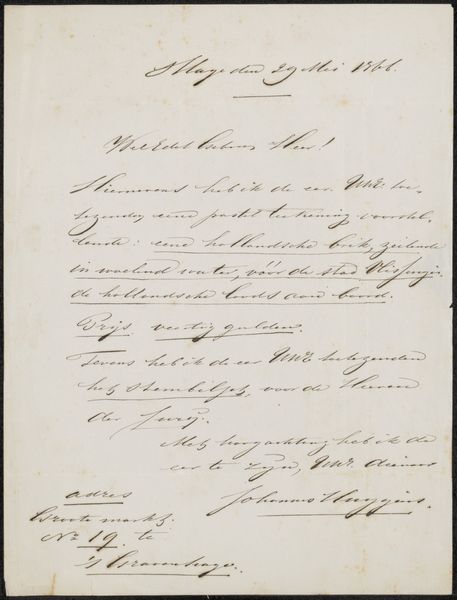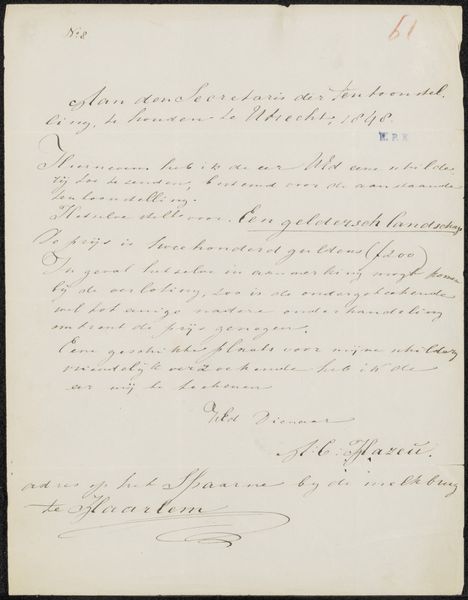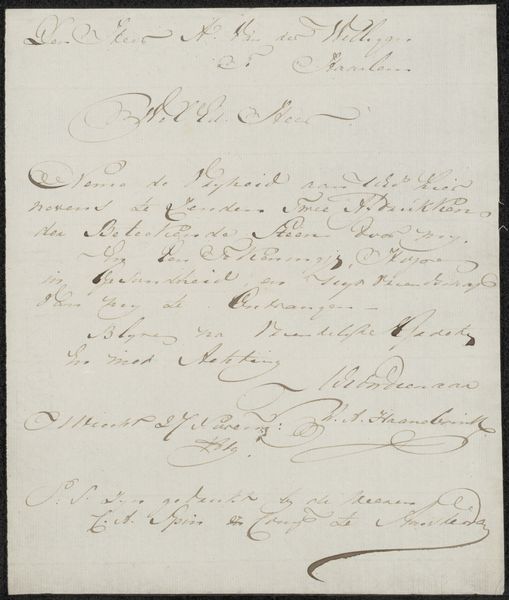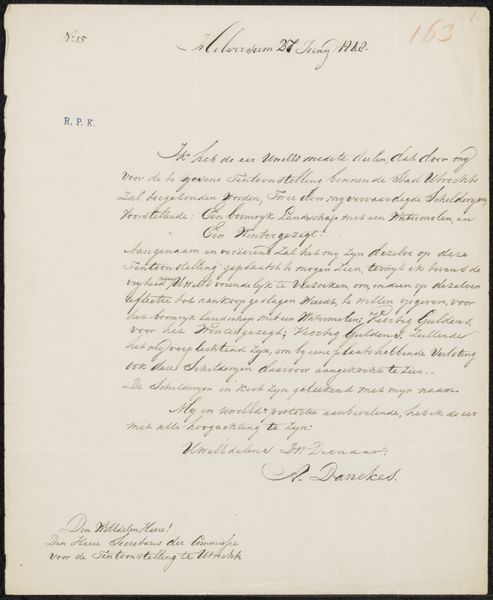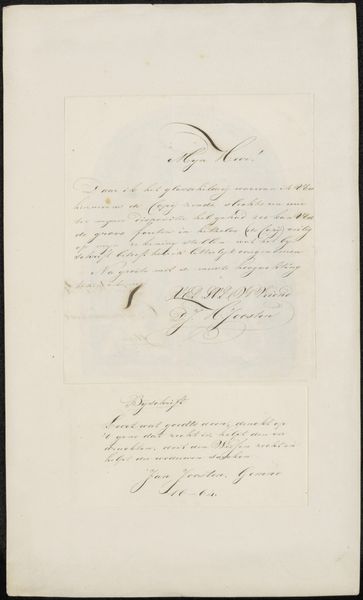
Brief aan de Commissie van de Tentoonstelling van Levende Meesters in Utrecht Possibly 1866
0:00
0:00
drawing, paper, ink, pen
#
drawing
#
paper
#
ink
#
pen-ink sketch
#
pen
#
academic-art
#
calligraphy
Copyright: Rijks Museum: Open Domain
Editor: Here we have Jan van Ravenswaay's "Brief aan de Commissie van de Tentoonstelling van Levende Meesters in Utrecht," likely from 1866. It’s ink on paper, a meticulously drawn letter. I’m struck by the formality of the handwriting. How do you see this letter in its historical context? Curator: It's fascinating to consider this letter within the framework of the "Exhibition of Living Masters" in Utrecht. These exhibitions were crucial in the 19th century, functioning almost as the sole arbiters of an artist's success and visibility. This letter itself becomes a performance. Editor: A performance? In what sense? Curator: Ravenswaay isn't just conveying information; he's consciously presenting himself as a professional. Consider the calligraphic skill – it speaks to a cultivated artistic identity. Think about the pressures on artists seeking approval from influential institutions. Do you get a sense of desperation or confidence? Editor: I see some of both! There’s an elegance suggesting confidence, but the act of writing suggests vulnerability. He is subject to the review and choices of others. This letter implies dependence on this commission. Curator: Exactly! And it opens questions about who got represented. Did the artists’ socio-economic status affect acceptance at these exhibitions? It probably did. A submission itself was also a financial outlay with uncertain reward. Editor: It gives a fresh understanding of what artists in this time period had to deal with. Curator: It illustrates that art, even correspondence, is deeply embedded in a system. By understanding the exhibition's power dynamics, we gain a deeper appreciation for both the artistic strategies and the societal pressures of the era. It suggests how critical gatekeepers were and may still be to this day.
Comments
No comments
Be the first to comment and join the conversation on the ultimate creative platform.
